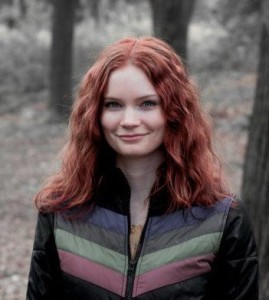Maid, by Stephanie Land: I started reading this right before attending my first Zoom event of quarantine, which was a memoir panel including Land. It’s a very compelling story, and I really enjoyed hearing her speak! The book itself to me felt like it was missing an editor – there were sentences that were so syntactically hard to parse that I had to read them multiple times to figure out the (usually straightforward) meaning, and many that drifted into cliche. I know that the author had an essay that went viral, and I wonder if the publishers rushed the book to press to capitalize on that?
The Wave, by Sonali Deraniyagala: At one angle, I don’t know why I chose to read a memoir of someone losing her entire family – husband, two children, parents – to the 2004 Indian Ocean tsunami, and it’s true that this knocked me over and left me sitting quietly staring into the distance. But Deraniyagala’s writing is beautiful and affirming, and it was only a further delight to Google her later and discover that she is now married to the actress Fiona Shaw, who plays a CIA agent on Killing Eve. You can find images of them together, elated and buoyant, across the internet. After trying and failing to imagine what such a horrific loss would feel like, it was incredible to see her now.
Say Nothing, by Patrick Radden Keefe: When I was trying to Google this book so I could search for it at the library by author, I Googled “Don’t Say a Word” or “Tell No One” or something like that (+ book) and…this came up anyway. Smart algorithm. I have to confess that for some reason I cannot keep a hold on who’s who among the IRA, the various branches within the IRA, the loyalists, the republicans, the Catholics, the Protestants, to the point where I wrote down on an index card which went with each other (I have a similar blank spot in my brain for which of “complementary” and “supplementary” sum to 90 degrees and 180 degrees).
It’s really eerie, for lack of a better word, to be reading this right now – the Troubles in the 1970s in Ireland are not an analog for the Black Lives Matter protests against police brutality happening now in America, but the pervasiveness of violence and the difficulty of determining what, exactly, is going on at times (ie are there “outside agitators” looking to profit or escalate, or is claiming that there are outside agitators dismissive of black pain and anger? Are there white supremacists infiltrating the protests or abetting the police?). In Say Nothing, there are double and triple agents among the British army, the IRA, and the loyalists, and the only certain thing seems to be violence.
Nothing to See Here, by Kevin Wilson: What a fun read. I spent the first fifteen or so pages – until the all-girls school was mentioned, I guess – thinking the main character was male. I don’t know if that was unconsciously related to the author being male (probably), or if the protagonist was an avatar for the author and he hadn’t quite disguised it enough, or something else. It’s not important, but it added to the narrator’s initial cypher-like quality.
Permanent Record, by Edward Snowden: Edward Snowden has a very archetypal face; I can think of three guys I know who have the same essential appearance. I think that’s part of why I feel an affinity for him (the other part is that, whether based on reasonable evidence or not, I’ve always thought of him as the “good” version of exposer with Julian Assange being the evil counterpart). He’s also my age. I do remember being affronted – and I’m sure this was some kind of projection on my part, given that I knew nothing of the situation – that he left the country without telling his girlfriend, the ultimate ghosting, and thinking that couldn’t he have at least told her in a letter, rather than making her find out with the rest of us?
And…as soon as I typed that I realized how numb-skulled it was for me to still be wondering how that had played out, given that it happened seven years ago. I think at the time I heard “his girlfriend knew nothing about his discoveries, revelations or planned departure!” and then inexplicably remained incurious. Obviously he kept her in the dark for her own safety, and – not a spoiler, I don’t think, since he mentions it early on – they’re now married.
Anyway. I still have a favorable impression of Snowden after reading this, still think whistle-blowers should be protected rather than exiled, and also feel the book was engaging and interesting. I’m curious (and this time I won’t just sit around wondering…) whether he had a ghostwriter or just an editor. There were a few lines that stuck out as a potentially-not-Snowden-himself writer attempting to manufacture “voice,” but the curation of anecdotes from Snowden’s childhood and early adulthood was done well. Aha – in what took me seven fewer years to answer, I have learned that Snowden had a collaborator-ghostwriter hybrid, Joshua Cohen, who’s a novelist.



